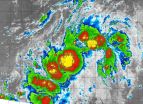"Our study shows that liposuction is associated with a very low complication rate, with major complications occurring in less than 1 in 1,000 patients," comments ASPS Member Surgeon John Y.S. Kim of Northwestern University, Feinberg School of Medicine, Chicago. "It also calls into question the concept of simple absolute thresholds for lipoaspirate volume--the amount of liposuction that can be performed safely seems to depend in part on how much fat content a person begins with."
Study Proposes 'Relative Liposuction Volume Threshold' Based on BMI There's a long history of debate over the safe volume of fat tissue that can be removed by liposuction. Current ASPS guidelines define 5,000 milliliters (five liters) as "large-volume liposuction" potentially associated with a higher risk of complications. But the guidelines acknowledge there is no scientific data to support an absolute cutoff point.
Dr. Kim and colleagues analyzed data on more than 4,500 liposuction patients, drawn from the ASPS's "Tracking Operations and Outcomes for Plastic Surgeons" (TOPS) database. They evaluated the relationship between liposuction volume and complication risk--including interactions with the patient's BMI.
The overall complication rate was 1.5 percent, with few serious complications and no deaths. By far, the most common complication was a fluid collection (seroma) requiring drainage. The average liposuction volume was about two liters.
Patients with complications had larger liposuction volumes--average 3.4 liters--and higher BMIs. Patients undergoing "large-volume" liposuction of more than five liters had a higher overall complication rate: 3.7 versus 1.1 percent. This resulted almost entirely from an increase in seromas.
There was also a significant interaction between liposuction volume and BMI: when patients with higher BMIs had a greater liposuction volume, the complication rate was actually somewhat lower.
"In other words, obese patients may tolerate larger lipoaspirate volumes without an increased risk of complications," the researchers write. In contrast, patients with lower BMIs experience a "more exponential increase in risk" at higher liposuction volumes. This relationship between a patient's pre-existing fat content and "safe" liposuction volumes had not been previously shown.
Dr. Kim and colleagues introduced the concept of a "relative liposuction volume threshold" based on BMI. Dr. Kim and co-researcher Dr. Karol Gutowski emphasized that this provides a relative threshold where complications start to increase, but does not imply an absolute limit on liposuction volumes. Other considerations such as length of surgery, adjunct procedures, and the patient's overall health status are also important to consider when evaluating liposuction risk.
"Our risk assessment tool can further aid shared decision-making between the surgeon and patient by linking BMI and liposuction volumes," adds Dr. Kim.
Dr. Gutowski, who is also a member for the ASPS Patient Safety Committee and past Chairman of the ASPS Quality & Performance Metrics Committee, points out that these finding are only possible due to the surgery data contributed by Board-certified plastic surgeons. "By developing the TOPS database, ASPS is leading the way in safe and effective plastic surgery which benefits both patients and plastic surgeons," he comments.
INFORMATION:
Click here to read "Is There a Safe Lipoaspirate Volume? A Risk Assessment Model of Liposuction Volume as a Function of Body Mass Index."
Article: "Is There a Safe Lipoaspirate Volume? A Risk Assessment Model of Liposuction Volume as a Function of Body Mass Index" (doi: 10.1097/PRS.0000000000001498)
Plastic and Reconstructive Surgery® is published by Wolters Kluwer.
About Plastic and Reconstructive Surgery
For more than 60 years, Plastic and Reconstructive Surgery® (http://journals.lww.com/plasreconsurg/) has been the one consistently excellent reference for every specialist who uses plastic surgery techniques or works in conjunction with a plastic surgeon. The official journal of the American Society of Plastic Surgeons, Plastic and Reconstructive Surgery® brings subscribers up-to-the-minute reports on the latest techniques and follow-up for all areas of plastic and reconstructive surgery, including breast reconstruction, experimental studies, maxillofacial reconstruction, hand and microsurgery, burn repair, and cosmetic surgery, as well as news on medico-legal issues.
About ASPS
The American Society of Plastic Surgeons (ASPS) is the world's largest organization of board-certified plastic surgeons. Representing more than 7,000 Member Surgeons, the Society is recognized as a leading authority and information source on aesthetic and reconstructive plastic surgery. ASPS comprises more than 94 percent of all board-certified plastic surgeons in the United States. Founded in 1931, the Society represents physicians certified by The American Board of Plastic Surgery or The Royal College of Physicians and Surgeons of Canada. ASPS advances quality care to plastic surgery patients by encouraging high standards of training, ethics, physician practice and research in plastic surgery. You can learn more and visit the American Society of Plastic Surgeons at http://www.plasticsurgery.org or http://www.facebook.com/PlasticSurgeryASPS and http://www.twitter.com/ASPS_news.
About Wolters Kluwer
Wolters Kluwer is a global leader in professional information services. Professionals in the areas of legal, business, tax, accounting, finance, audit, risk, compliance and healthcare rely on Wolters Kluwer's market leading information-enabled tools and software solutions to manage their business efficiently, deliver results to their clients, and succeed in an ever more dynamic world.
Wolters Kluwer reported 2014 annual revenues of €3.7 billion. The group serves customers in over 170 countries, and employs over 19,000 people worldwide. The company is headquartered in Alphen aan den Rijn, the Netherlands. Wolters Kluwer shares are listed on NYSE Euronext Amsterdam (WKL) and are included in the AEX and Euronext 100 indices. Wolters Kluwer has a sponsored Level 1 American Depositary Receipt program. The ADRs are traded on the over-the-counter market in the U.S. (WTKWY).
Wolters Kluwer Health is a leading global provider of information and point of care solutions for the healthcare industry. For more information about our products and organization, visit http://www.wolterskluwerhealth.com, follow @WKHealth or @Wolters_Kluwer on Twitter, like us on Facebook, follow us on LinkedIn, or follow WoltersKluwerComms on YouTube.



